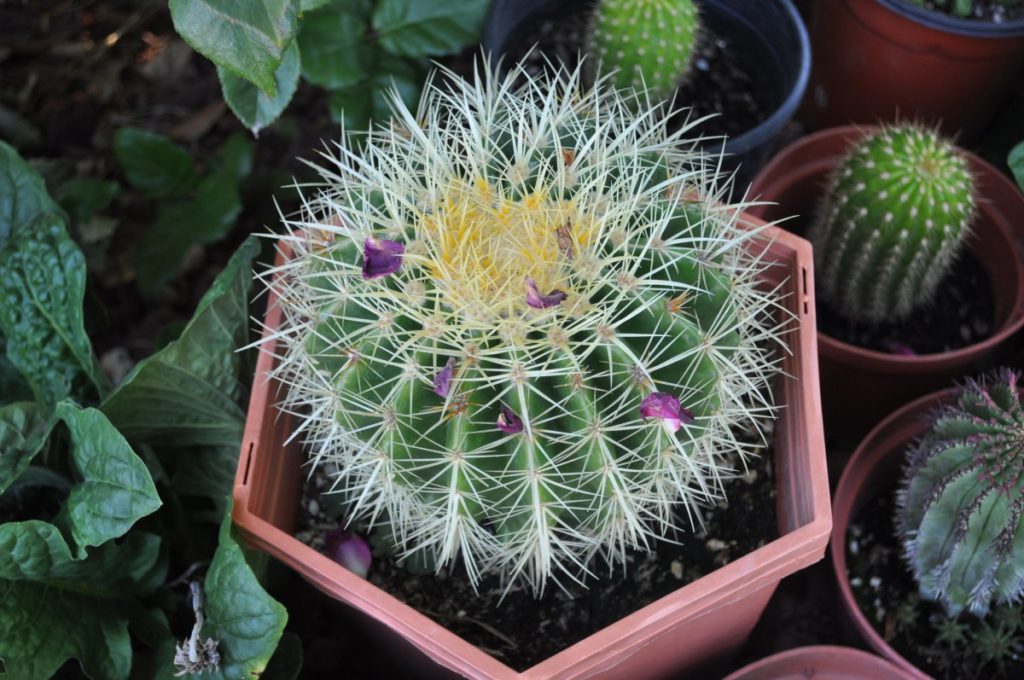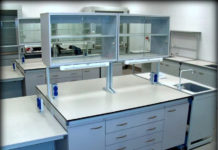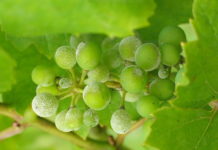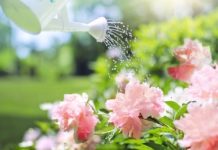Flora is the green world of plants. Its variety is so rich that it can satisfy any demanding taste, enlivening any modern "jungle". Blooming, perennial, annual, domestic, curly, hanging, large, tree-like, green-leaved. Different shapes, sizes, requiring careful care, unpretentious, light-loving, shade-loving. A special group are succulents that can be used for home furnishings.
This numerous beauty not only pleases the eye, bringing aesthetic pleasure, but also works, absorbing harmful substances from the air, purifying the air, giving maximum oxygen, possessing positive energy, being medicines. How to understand all the diversity of this beauty without getting completely confused?
Content
What is a succulent plant?
Those taking their first steps into the world with the beautiful name "Flora" are advised to turn their attention to succulents. These simplest representatives of the green world will be the most suitable for home interiors, because have many advantages. Let's get to know them.
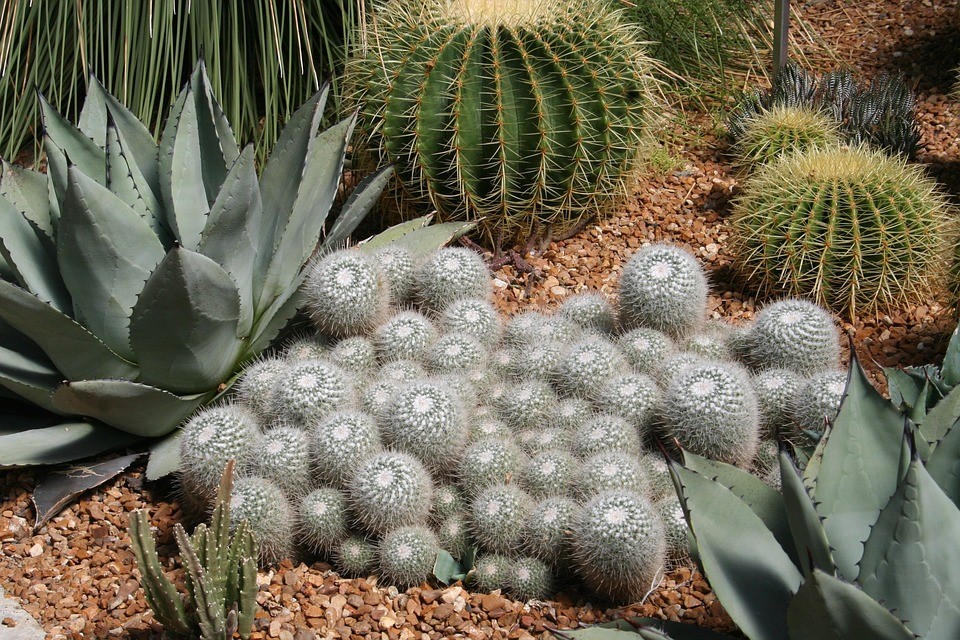 Suitable for growing by beginners who, unknowingly, can make mistakes in care. Excessive flooding, overdrying, incorrect location, etc. These plants are patient and hardy. Suitable for busy people who do not have the opportunity to devote a lot of time to caring for home "residents", or who do not know all the intricacies of growing.
Suitable for growing by beginners who, unknowingly, can make mistakes in care. Excessive flooding, overdrying, incorrect location, etc. These plants are patient and hardy. Suitable for busy people who do not have the opportunity to devote a lot of time to caring for home "residents", or who do not know all the intricacies of growing.
Unusual geometric shapes, a variety of colors allow you to create stylish alliances from different varieties. These gifts of flora will soothe after a working day, create harmony in the home environment.
Succulents - comes from the Latin word "sukus", translated from Latin meaning "juicy". They can be blooming, variegated, tall, wide in girth, carpet-like, hanging.
Advantages:
- a wide variety of shapes, sizes;
- not whimsical to external conditions;
- do not require frequent watering;
- do not need regular fertilization;
- do not take up much space;
- grow well in small containers.
Disadvantages:
- some species have thorns;
- in the composition of individual succulents there is a poisonous milky juice;
- some specimens have a protective powder coating, which is erased from touch.
General information
How to care
Basically, succulents have general rules of care, with some exceptions:
- Lighting
They all love enough light, and the best location for them is the south side. They like to spend the winter on the windowsills, closer to the glass, where it is cooler. It is possible to separate them from the room to create a room temperature barrier. From spring to autumn, they can be kept on the balcony.
- Temperature
The average temperature, which best meets their needs, does not exceed +15 degrees in winter, up to +30 degrees in summer.
- Watering
They like moderate watering.In winter, it is about once a month, and in summer, once a week is enough. With separated water, room temperature. They do not like frequent watering - they may die from this, tk. moist soil is a favorable atmosphere for the development of bacteria. To exclude the "flooding" of flowers, after drying the soil wait about two or three days. Only after that the next watering is carried out. They are good friends with moss, the addition of which will increase the retention of the necessary moisture for the roots.
The biggest mistake is overfilling, which results in the development of bacteria or fungal diseases.
- Disinfection
Prevention of pests, the most common among them - midges, is carried out with the help of special insecticidal agents, which can be purchased in flower shops. Tilling once a month is sufficient to maintain a healthy soil level. In advanced cases, for the destruction of a specific type of pest, expert advice will help.
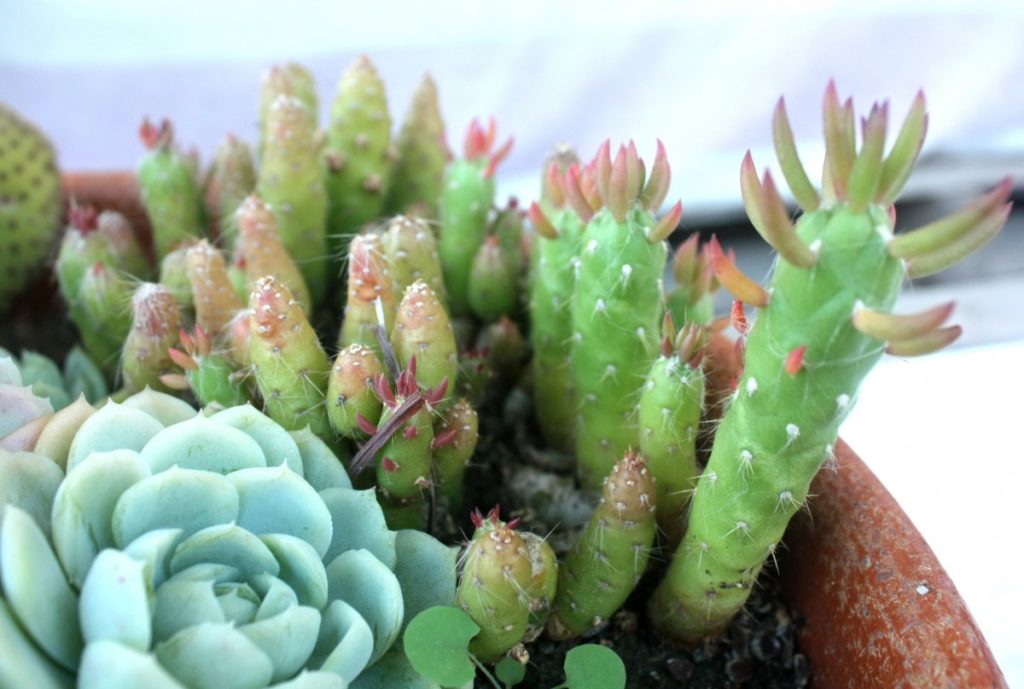
How to plant
For planting, a mixture of equal parts of coarse sand, leaf and sod humus, without peat, using drainage is suitable. This species needs good oxygen access to the roots. Mixtures with organic additives are not suitable. They tolerate the soil well with potassium and phosphorus. There are specially prepared mixtures for cacti, green leaves, etc.
They like good air ventilation, so regular ventilation of the room is necessary.
Transplanted in the spring. Fast growing - annually, in a larger pot. Adult succulents: every two to three years. They need fertilization in the spring and summer. After transplanting, they are not watered immediately, but only after a few days.
Planting succulents step by step:
- We disinfect the prepared soil from insects. To do this, we place it in the oven and “bake” it at medium temperature.
- We process working tools and pots in which we will place future green residents.
- Any pots will do. Necessarily with holes at the bottom.
- At the bottom of the flowerpot we pour drainage on ¼ of the pots volume. It can be made of expanded clay, broken shards, bricks. It is necessary so that the water does not stagnate, but has a way out.
- We fill in the prepared soil (purchased or created mixture) for 2/3 of the pot.
- We place the succulent in the hole, level the ground.
- Pour a layer of expanded clay on top to slow down the evaporation of moisture from the surface.
- After planting, do not water the flower for several days so that it passes the adaptation period and strengthens.
- After 3 to 5 days, moderate watering can be started.
You can propagate green inhabitants by seed, cuttings, deciduous methods.
Newbie mistakes
The most common mistakes that can lead to the death of a succulent:
- Incorrect soil composition, with the addition of clay soils;
- Neglect of temperature treatment of soil mixture;
- Leave the succulent plant in the sun, hoping that the guest from the desert will "survive";
- Planting a plant in a pot much larger than the size of the flower itself;
- Watering like normal plants can lead to decay.
Nonsense, but these green "Spartans" can die in comfortable conditions!
Nevertheless, adherence to the general conditions of care will not be superfluous to create good growth, the correct development of guests from the desert.
Some features
Green guests from hot countries have their own distinctive characteristics in leaving:
- bright colors require less light. And with light or red shades - great light illumination.
- With fleshy leaves or trunk - less watering.
- Inhabitants of the tropics need high air humidity and winter temperatures of +15 degrees.
- For residents of hot countries - moderate watering, and the temperature for wintering is +15 degrees.
- Those brought from Central America require limited watering, and they winter safely at a temperature of +12 degrees.
- South America prefers low humidity in winter.
- The fluff on the leaves or stem indicates that this flower is used to receiving moisture from dew.
- The presence of long roots is about getting it from groundwater.
- If the leaves are long, then water flows down them to the root.
- The presence of terrestrial shoots also speaks of quenching thirst with the help of dew.
The most common types
According to the method of water storage, they are divided into two large groups:
- Leafy
Flowers accumulate moisture in the fleshy, succulent leaves. They can be of various shapes, colors. The most famous representative is aloe, which is known for its medicinal properties. This also includes lithops, agave, gasteria, haworthia, echeveria, bastard (stonecrops and rejuvenated), etc. - Stem
The liquid is stored in the stems. The leaves are either very small or have the form of thorns that protect the plant from being eaten by animals. Evaporation of moisture is slow, due to the formation of a gel in the stem of organic acids, sugar, cell sap. The most common are cacti, a variety of milkweed.
To select the most suitable succulent plant, as well as to have an idea of how to create a harmonious alliance from these magnificent gifts of flora, we will consider the most common and stylish examples.
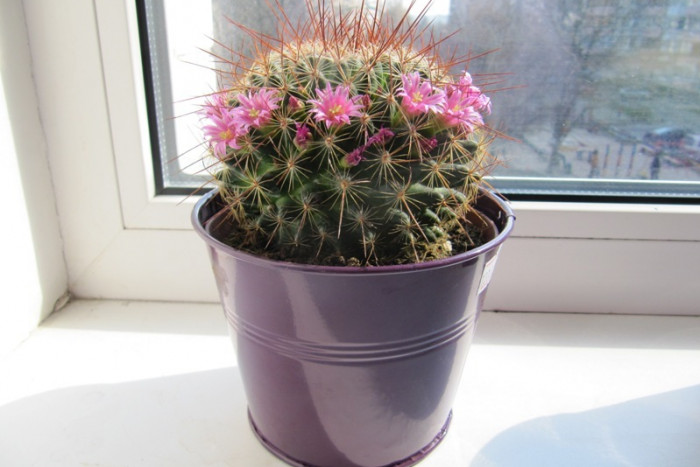
Cactus
Come from South and North America, West Indies. They have various forms: creeping, spherical, columnar, high, with processes, in the form of thorny thickets, with "hanging". They are triangular, in the form of a cylinder or a ball, from two cm to one meter.
Common decorative types:
- Cactus Gruzona
Spherical, has a large number of ribs with yellow spines on them. Does not bloom at home. Has a beautiful, decorative look.
- Echinopsis
It can change shape from spherical to elongated. It depends on the amount of light it receives. Blooms at night. The bell-shaped flower can be white, pink or red.
- Mammillaria
Reaches a maximum of 25 cm, has the shape of a ball. Various colors.
- Gymnocalycium
This is a blooming cactus with an original shape, not very large in size. Requires darkening from direct sunlight. Funnel-shaped flowers, different colors.
- Prickly pear
It has many varieties. There are even frost-resistant ones. With a light touch to the surface, hard spines dig deeply into the skin, causing tangible pain.
- Rebution
A type of cactus whose flowers are located at the base of the stem. Loves wet spraying. Has a different color range of inflorescences.
- Notocactus
It is original in that it blooms very rarely. This happens once every 10 to 15 years. It has an original yellowish tint with multicolored bunches of thorns.
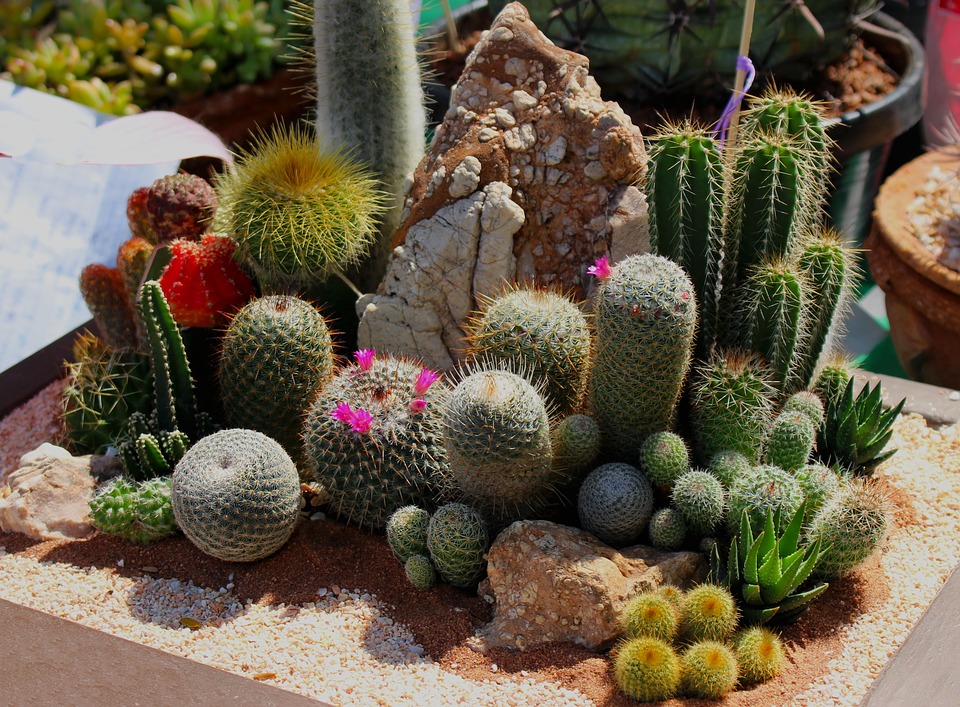
Advantages:
- variety of forms;
- ease of care;
- does not require frequent watering;
- neutralizes harmful radiation from
- TV, microwave, computer,
- solar activity, has healing properties,
- some varieties are used in cooking.
Disadvantages:
- some specimens are poisonous;
- rather sharp spines;
- can not only accumulate negative energy at home, but also neutralize positive;
- are dangerous for children and pets.
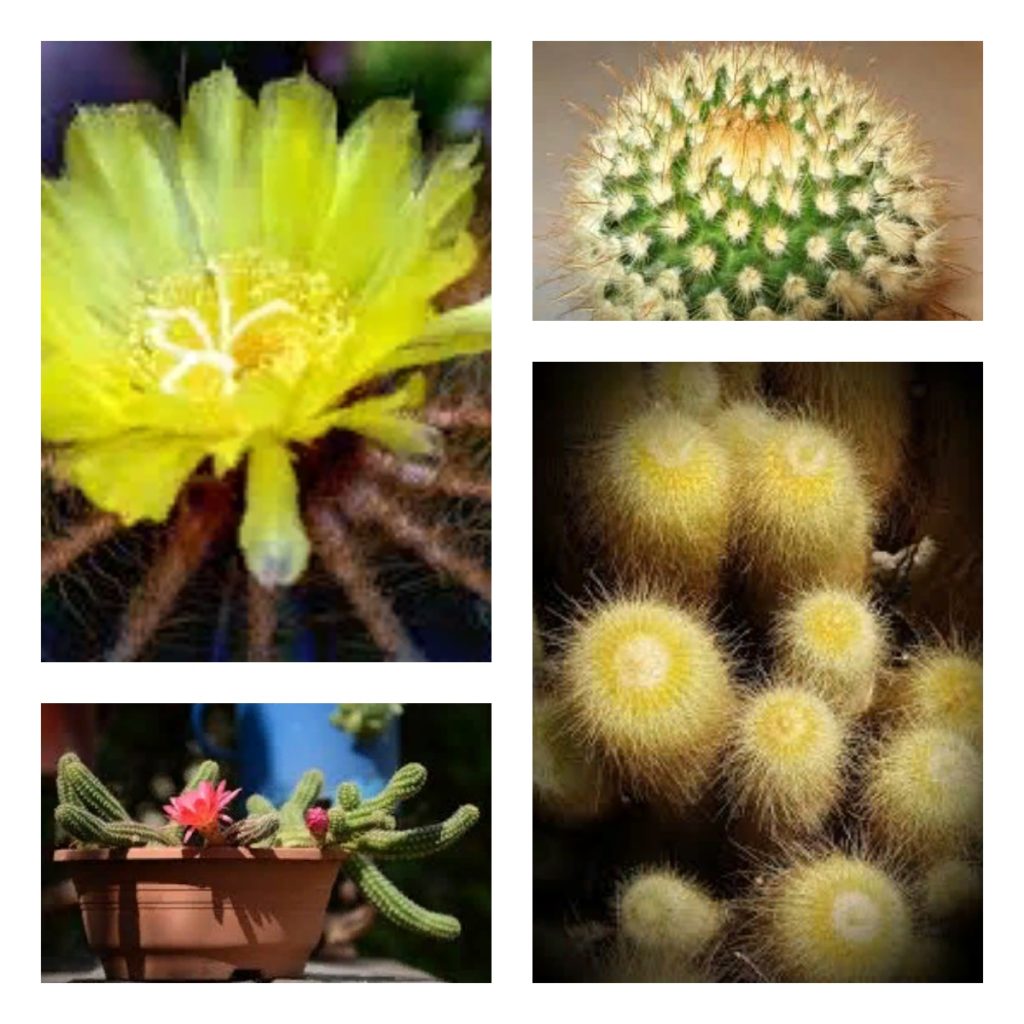
Cactus care:
Priming:
Specialized, ready-made cactus potting soil, available from most florist shops, is best. It should be free of organic additives, easy for water to penetrate.
Watering:
In winter, watering is reduced as much as possible, resuming with the onset of the spring - summer season.
Top dressing:
Doesn't really need feeding. But if such a need arises, then you should use ready-made fertilizer from flower shops, compiled taking into account all the needs of the succulent.
Reproduction:
Seeds that can be purchased; children; by vaccination. This type of propagation is acceptable for more experienced gardeners.
Bloom:
To achieve flowering cactus, it is necessary to create conditions for its proper wintering.
For the winter period, it should be placed in a place with a temperature of +7 to +15 degrees, completely stop watering.After the beginning of gardening with the beginning of spring, cautious watering should be started, gradual accustoming to sunlight.
Diseases:
- decay of roots from frequent watering;
- Overfeeding with fertilizers, which will tell about the wounds on the stem;
- Burns from too much sunlight in the form of discoloration of the stem;
- Watering with cold water will stain the cactus;
- Pests that can settle on a succulent are ticks, worms. Insects can be removed manually. Subsequently, carry out processing.
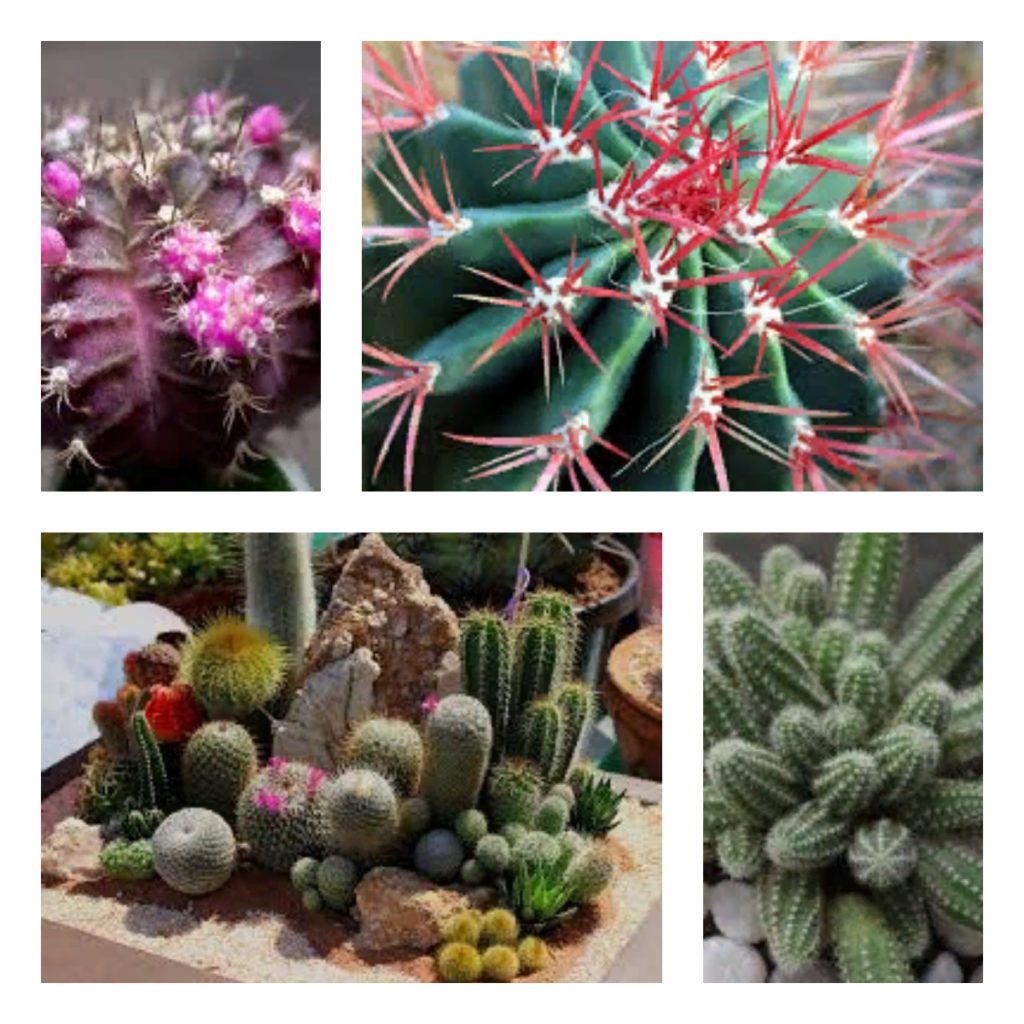
average price:
Cactus 40 rubles.
Zygocactus - 350 rubles, Zygocactus with buds - 790 rubles;
A set of three cacti - 800 rubles; from four succulents - 1090 rubles.
Echinocactus 10 cm high - 1000 rubles, 14 cm - 1360 rubles, 20 cm - 2040 rubles, 25 cm - 3890 rubles.
Blooming cactus Mammillaria, 5 cm high - 660 rubles, 9 cm - 990 rubles, 12 cm - 1690 rubles.
The cost of seeds of a mixture of cacti is from 18 to 89 rubles / pack.
Crassula
Or a fat woman, a money tree. Homeland - South Africa, Madagascar.
There are more than three hundred varieties. Various sizes - from 10 cm to 4 m.
Stem dense, branching towards the top. The leaves are fleshy, rounded, reminiscent of coins.
The color can vary from green to reddish, depending on the intensity of the light.
It is because of the shape of the leaves that the common name of the succulent plant is a money tree that brings material prosperity, luck, wealth.
Their edges can be smooth or serrated. Grooves or cilia may form on the surface to retain moisture.
With proper pruning, you can form a crown of the desired shape.
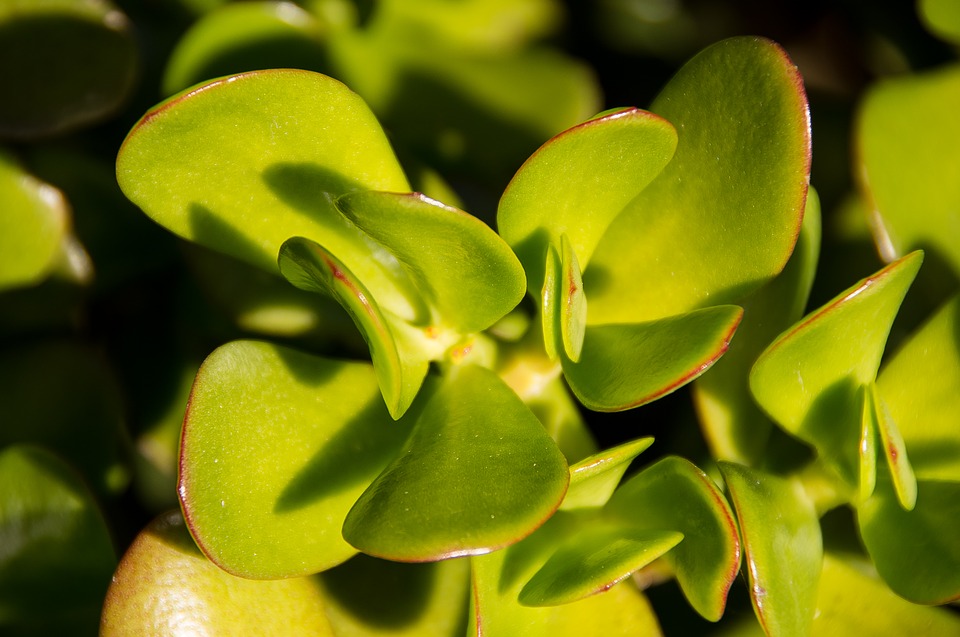
According to the initial form, there may be:
- tree-like
They can form a crown, and in the future get a bonsai tree. A striking representative is the money tree.
- Curly
Looks like an ordinary fat woman. It has a trunk with fleshy green leaves, the edges of which are reddish. Have wavy curves.
- Coral
A variety that outwardly resembles sea coral with its branches.
- Tricolor
Has a tricolor leaf color. The common color is green, with white stripes and a reddish border.
- Columnar
Interesting for its original structure. They do not have branches in the form of separate branches with leaves. Outwardly, it resembles a trunk on which geometric leaves are planted. It looks very nice - like a relief mini column.
- Perforation
Straight stems with triangular leaves, on which there are specks of a dark green or red hue. The broadleaf species has shoots with smooth, thick diamond-shaped leaves.
- Creeping
With curved stems dotted with leaves of different colors. With a silver pile that covers the whole plant. Or with fleshy leaves arranged in the form of rosettes along the stem, with red blotches.
Advantages:
- ease of care;
- the most popular flower;
- growing rapidly;
- creates harmony in the house;
- versatile;
- some types are used in traditional medicine.
Disadvantages:
- If not properly watered, it can give off an unpleasant odor;
- an adult money tree is quite heavy and can be unstable.
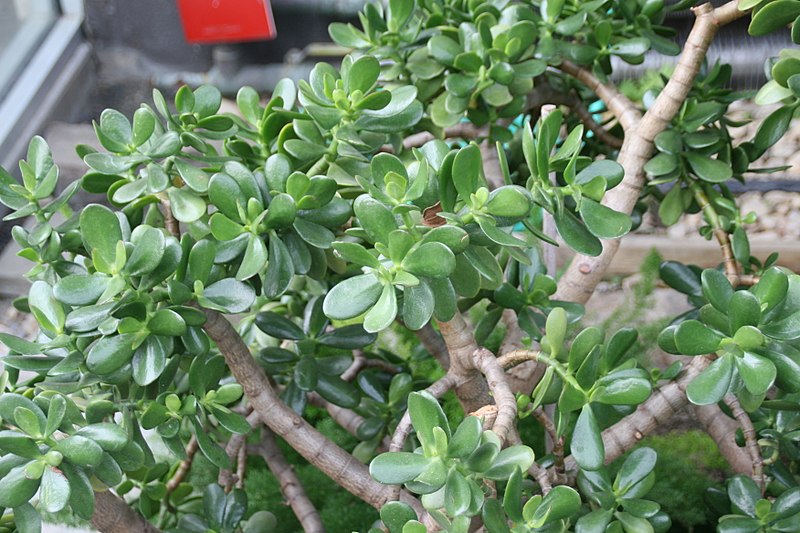
Suitable microclimate:
The ideal temperature for this type of succulents is +10 degrees in winter and +25 in summer. Eliminate drafts.
Priming:
A mixture for succulents is suitable; universal flower; soil prepared by yourself. It should consist of sand, loam, taken in equal proportions. Expanded clay drainage is laid at the bottom of the pot.
Watering:
Limited watering - in summer, rare in winter. Yellowed falling leaves indicate the initial stage of decay of the root system. Loves periodic spraying.
Top dressing:
For fertilization, you can use ready-made compositions for cacti. In the hot season, one feeding is enough every 2 - 3 weeks, in the cold season - once every three months. It is necessary to feed the flower one day after watering to avoid burning the roots.
Reproduction:
Occurs in leaves, cuttings, seeds.Even those leaves that simply fall off when placed in a pot have a good chance of taking root and then germinating.
The most convenient way is cuttings. Having detached the upper part of the plant, place it in a container with water for root germination.
Bloom:
Blooms rarely enough - once a decade. Very rarely, it can bloom after five years with proper care. Flowering can be achieved by reducing the length of daylight hours.
Diseases:
- The first sign of the disease will be leaf fall, which indicates excessive watering;
- An excess of the sun is manifested in the appeared multi-colored spots, dots;
- If the leaves turn yellow, dry out, this indicates insufficient watering.
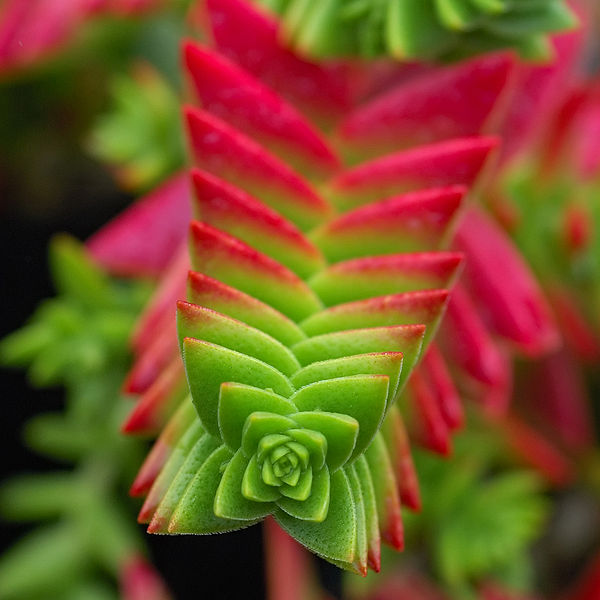
average price:
money tree, 15 cm high - 490 rubles; 20 cm - 690 rubles.; 25 cm - 990 rubles.; 30 cm - 1690 rubles.; 50 cm - 4690 rubles; 55 cm - 5500 rubles.; 65 cm - 7990 rubles.
fatty seeds - 50 rubles / pack.
Echeveria
Has a second name echeveria. Homeland - Central and South America, Mexico. It looks like a bush. Or a root rosette of thick juicy leaves. There are 170 varieties. In appearance, it looks like a stone flower. If this inhabitant of hot countries does not have enough light, he begins to stretch, increasing the distance between the leaves. At the same time, the stem is exposed.
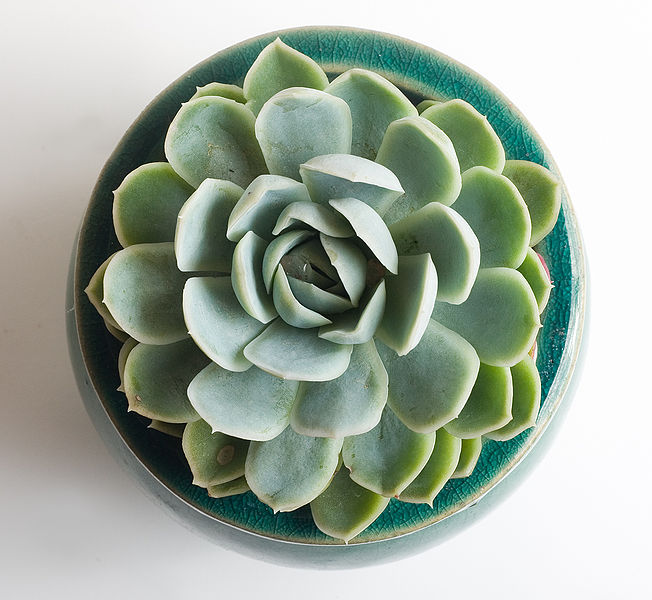
Advantages:
- easy enough to care for;
- high survival rate;
- easy to propagate;
- beautiful outwardly.
Disadvantages:
- slow growth;
- from lack of lighting, it can lose its individual shape;
- from touching it loses its protective layer (powder coating), which is erased;
- fragility.

Suitable microclimate:
Transfer temperature from +6 to +25 degrees. Some varieties have been developed that can withstand temperatures up to -7 degrees. These are light-loving flowers that do not require darkening.
Priming:
Consists of soil, sand, perlite, clay, charcoal. The proportions of the constituent substances are taken in a ratio of 3: 1: 1: 1: 1. Expanded clay drainage is laid at the bottom of the pot.
Watering:
In winter, Echeveria is dormant, so its rare watering will be sufficient. In the summer, hydration is carried out once a week.
In high temperatures, place a container with water next to it for additional humidification. Does not need to be sprayed.
Top dressing:
It tolerates fertilizers selected for cacti and succulents quite well. The introduction is carried out in the spring - summer period, monthly.
Reproduction:
Reproduction of this species is possible in several ways: using rosettes, seeds, leaves.
Bloom:
The abundance of sunlight ensures good flowering, which occurs at different times of the summer, depending on the variety. There are varieties that bloom even in winter.
Diseases:
Lack of watering leads to drying out, wrinkled outlet.
If rotting is noticed, then this indicates stagnation of water in the pot or overflow of succulent.
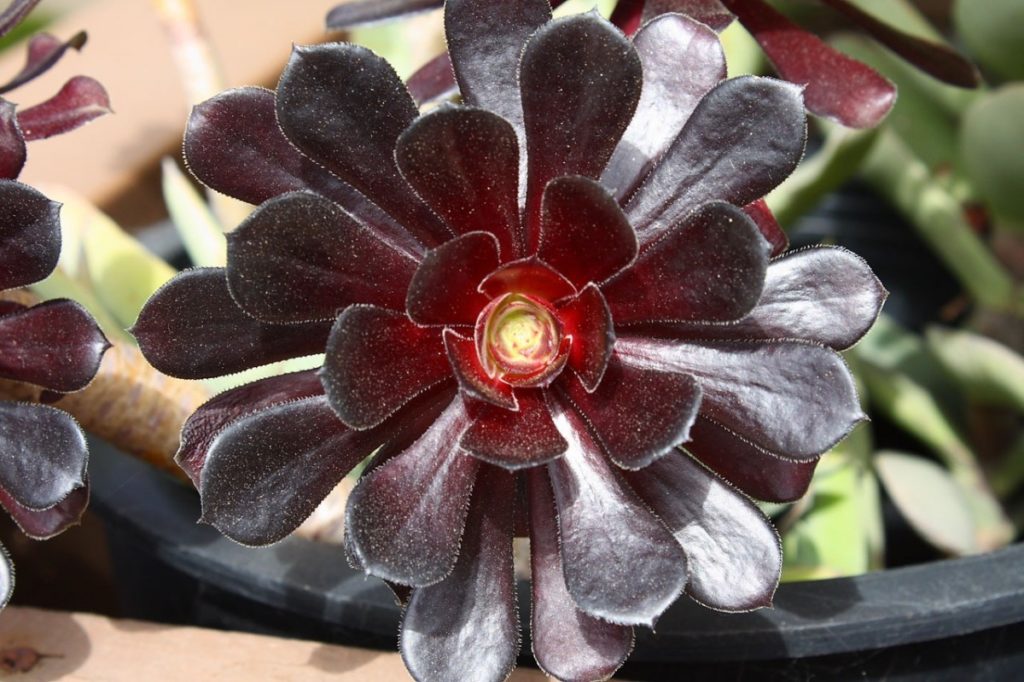
average price:
echeveria 20 cm high - 2302 rubles, a set of seeds of 20 pcs. - 98 rubles / pack.
Aloe
Originally from North Africa, Canary Islands. It is used in cosmetology, perfumery, medicine, as a folk remedy. Due to its unique ability to close pores, thereby retaining moisture inside, aloe can survive in conditions where other succulents die. A short trunk with triangular leaves, pointed at the edges, green in color.

Advantages:
- fast growth;
- unpretentious;
- has a wide range of medicinal properties;
- used in cosmetology;
- unpretentious;
- calmly tolerates dry air;
- popular;
- easy to propagate;
- rarely gets sick.
Disadvantages:
- does not like drafts;
- quickly "outgrows" and "stiffens";
- has sharp spine-like processes at the edges of the leaves;
- rare flowering.
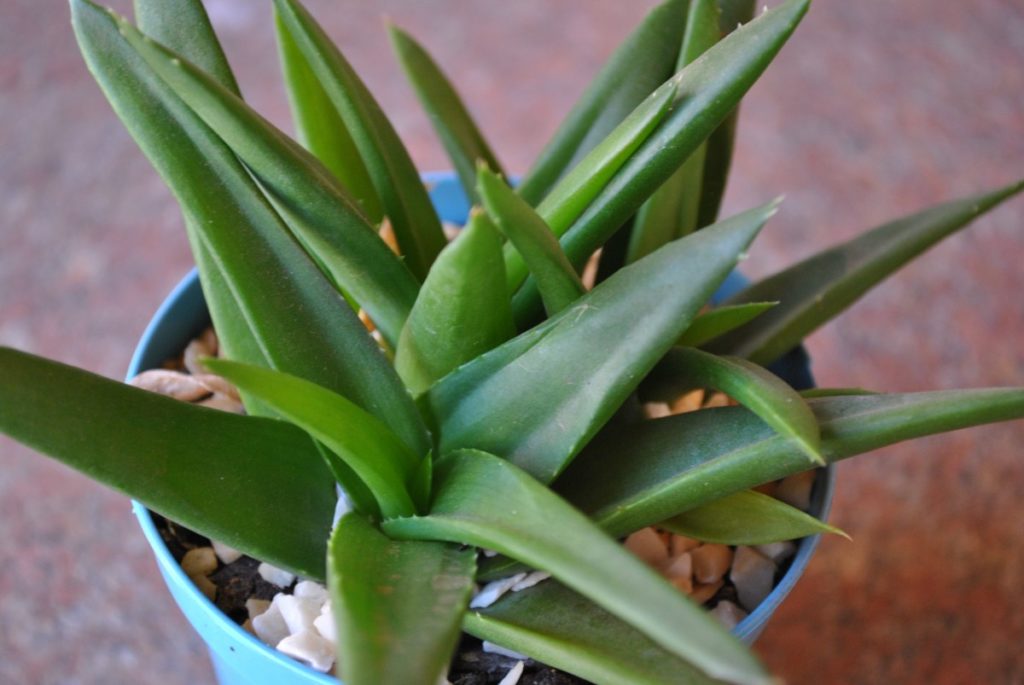
Suitable microclimate:
It transfers temperatures from +13 to +25 degrees. Should be protected from drafts.
Priming:
A mixture of leafy soil, humus, sand, turf soil in a ratio of 1: 1: 1: 2. A transplant is recommended in the fall. As with other succulents, clay soils are not suitable.It grows quickly, therefore it requires an annual transplant into a larger pot.
Watering:
In winter, watering is rare, in summer, moderate, but abundant. Does not need additional spraying. It tolerates dry indoor air well (not to be confused with stuffiness).
Top dressing:
Once every two weeks in the spring - summer period. Fertilizing with nitrogen and minerals is useful. From an excess of fertilizer, the flower may die. It tolerates top dressing based on folk remedies: sugar, eggshells, water after washing some cereals.
Reproduction:
It is carried out using the shoots of the root system, which is sufficiently developed; cuttings or seeds.
Bloom:
Aloe bloom is a rare phenomenon, possible once every 20 years. Subject to the most careful care. He shoots out an arrow with small flowers of scarlet, yellow or orange.
Diseases:
He rarely gets sick. The main pests of aloe are mealybug, scale insect. They can be destroyed with insecticides or folk remedies.
The flower can survive root decay from over-watering.
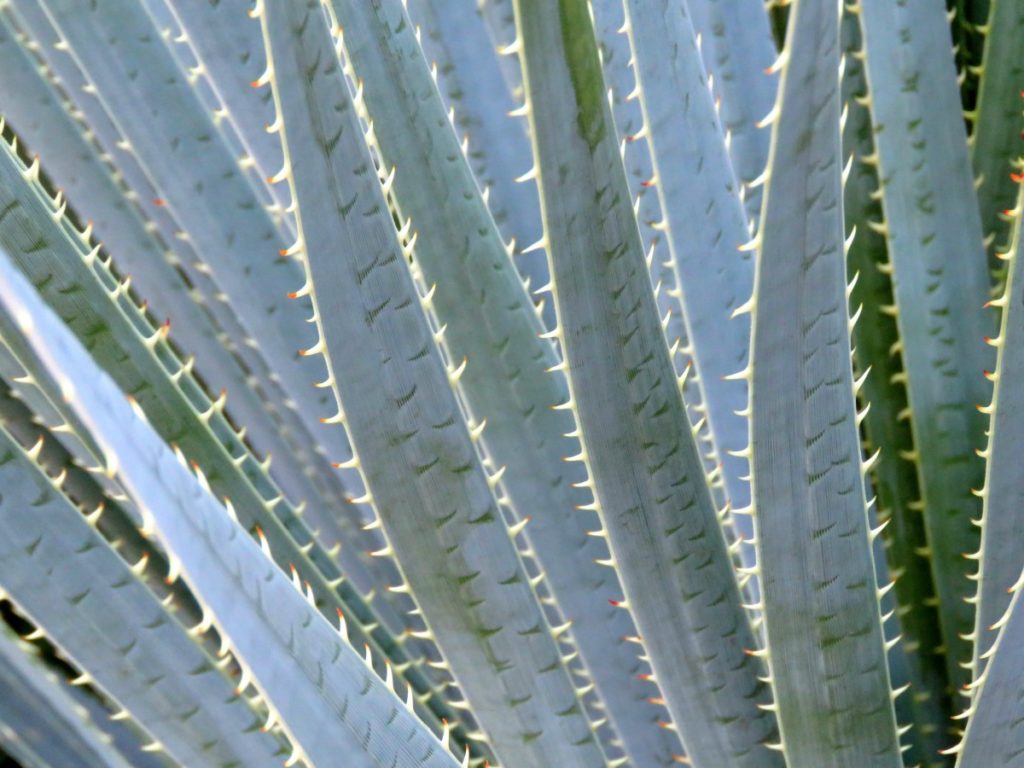
average price:
aloe 25 cm high - 690 rubles, 30 cm - 1290 rubles, 40 cm (3 years old) - 2190 rubles, 55 cm - 2990 rubles.
Kalanchoe
Originally from South Africa, South America. There are more than 200 varieties. There are species from small sizes to 4 meters with a variety of leaf shapes, the edges of which can be jagged or straight.
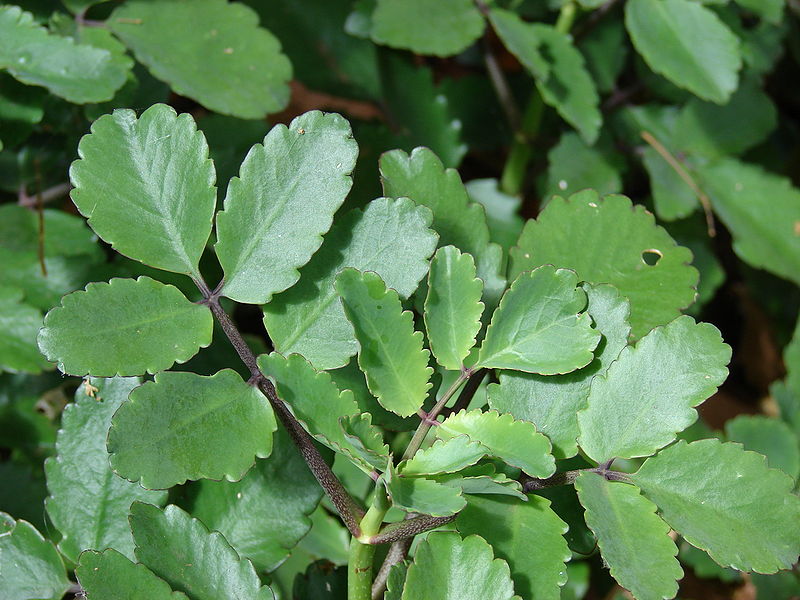 There are both medicinal and decorative types:
There are both medicinal and decorative types:
- Kalanchoe Blossfeld with small flowers resembling dwarf roses;
- Kalanchoe Mangina with hanging flowers in the form of bells;
- Bekharskoe with wavy leaves;
- Felt Kalanchoe with velvety leaf cover, brown border;
- Tubular with tube-shaped leaves with small red flowers at the ends;
- Fedchenko with many stems, gray leaves - green color, rounded with wavy edges.
Advantages:
- high degree of adaptation;
- growing rapidly;
- blooms with beautiful flowers;
- variety of colors;
- widespread use in medicine;
- multiplies easily;
- does not cause allergies.
Disadvantages:
- with improper care, it can change its original shape;
- blooms only if the rules of care are followed;
- before purchasing, it is better to familiarize yourself with the information on growing.
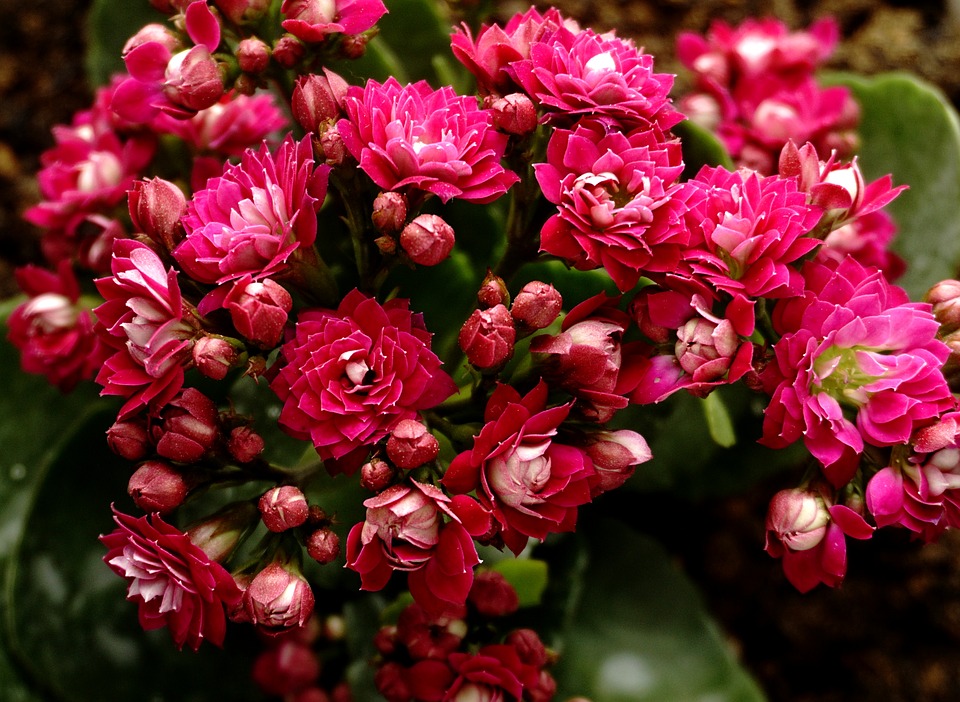
Suitable microclimate:
Kalanchoe loves good lighting, tolerates dry air well. The temperature in winter is up to +12 degrees, the rest of the time is average.
Priming:
Soils with a slightly acidic or neutral composition are suitable. To prepare an earthen composition, you will need peat, sod land, sand, leafy earth. The ratio is 1: 4: 1: 2 with the addition of a small amount of humus to the mixture.
Watering:
In winter, reduce watering as much as possible. In summer, it is moderate, with the exception of the drying period of the top layer.
Periodic spraying is possible. Except for species with fluff on the leaves.
Top dressing:
Fertilizer is applied from late spring to mid-summer, monthly. Ready-made compositions for succulents or cacti are suitable.
Reproduction:
Seeds, cuttings, buds, which themselves fall into the ground and begin to germinate.
Bloom:
The flowers are like roses or bells and are tubular in shape. Colors - white, pink, purple, light green, yellow, red.
Diseases:
The main pest is mealybug.
A diseased Kalanchoe can be identified by the formation of lumps of white cobweb on the leaves or trunk. They are removed manually, followed by processing.
Possible root rot from excess moisture.

average price:
Kalanchoe 15 cm high - 1200 rubles, 20 cm - 1500 rubles, 30 cm - 1790 rubles.
Sedum
Common name stonecrop (sitting). Its origin is in the highlands. It is a low ground covering plant, up to 3 cm in height. It has some specimens up to 80 cm in height.
Origin - from Eurasia, Africa, North and South America. They are annual and perennial, of various shapes and colors.
There are more than 650 varieties.The decorative types include: white, hybrid, Spanish, bent, false, Kamchatka, Weinberg, tenacious, poplar, prominent, Morgan.
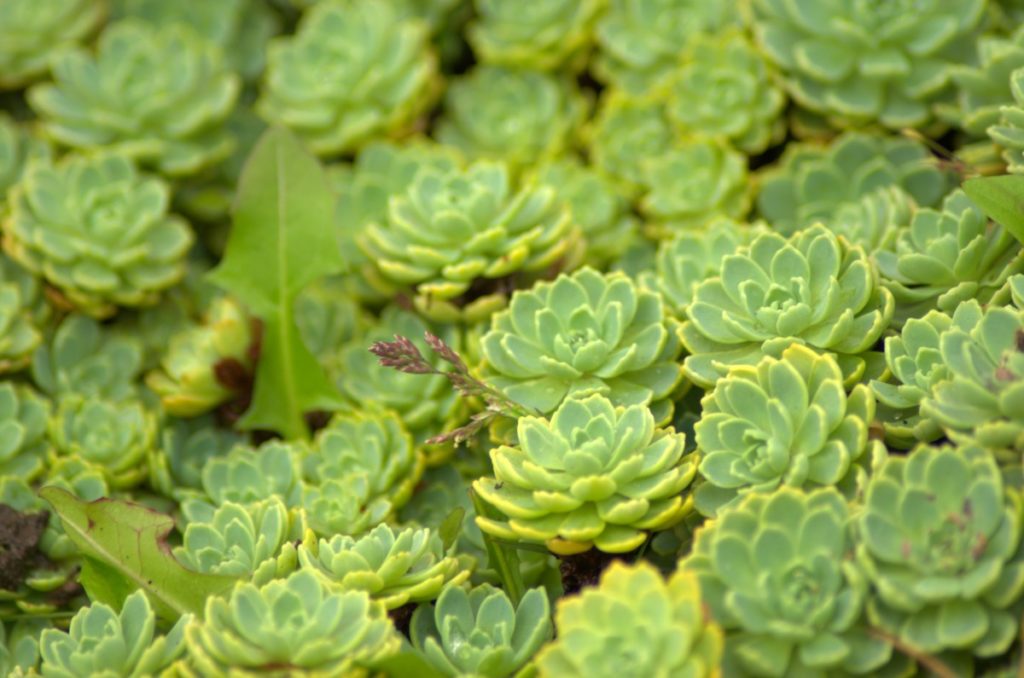 Advantages:
Advantages:
- tolerates dry periods well;
- variety of specimens;
- beautiful;
- not very picky about the soil.
Disadvantages:
- picky about lighting;
- in low light it loses its appearance.

Suitable microclimate:
In winter, it is necessary to lower the temperature to +10 degrees, in the summer it is kept up to +30 degrees. It is important for him to survive the winter time in sufficient cold, otherwise he may change shape. Sedums are very fond of sufficient lighting, a permanent place.
Priming:
Ready-made mixtures for cacti or prepared on the basis of sod, leafy soil, sand are suitable for plants. It is necessary to take the components in a 1: 1: 1 ratio.
Watering:
Does not like abundant, but requires regular watering. In the summer, it is enough to water as the soil dries. In winter, watering is carried out much less often.
Top dressing:
Held from the first spring month to September, once a month. You can use fertilizers for cacti.
Reproduction:
Perhaps in several ways: by cuttings, seeds, shoots.
Bloom:
Blooms in summer or autumn.
Diseases:
Excessive watering can lead to the formation of rootworms. This is due to root rotting.
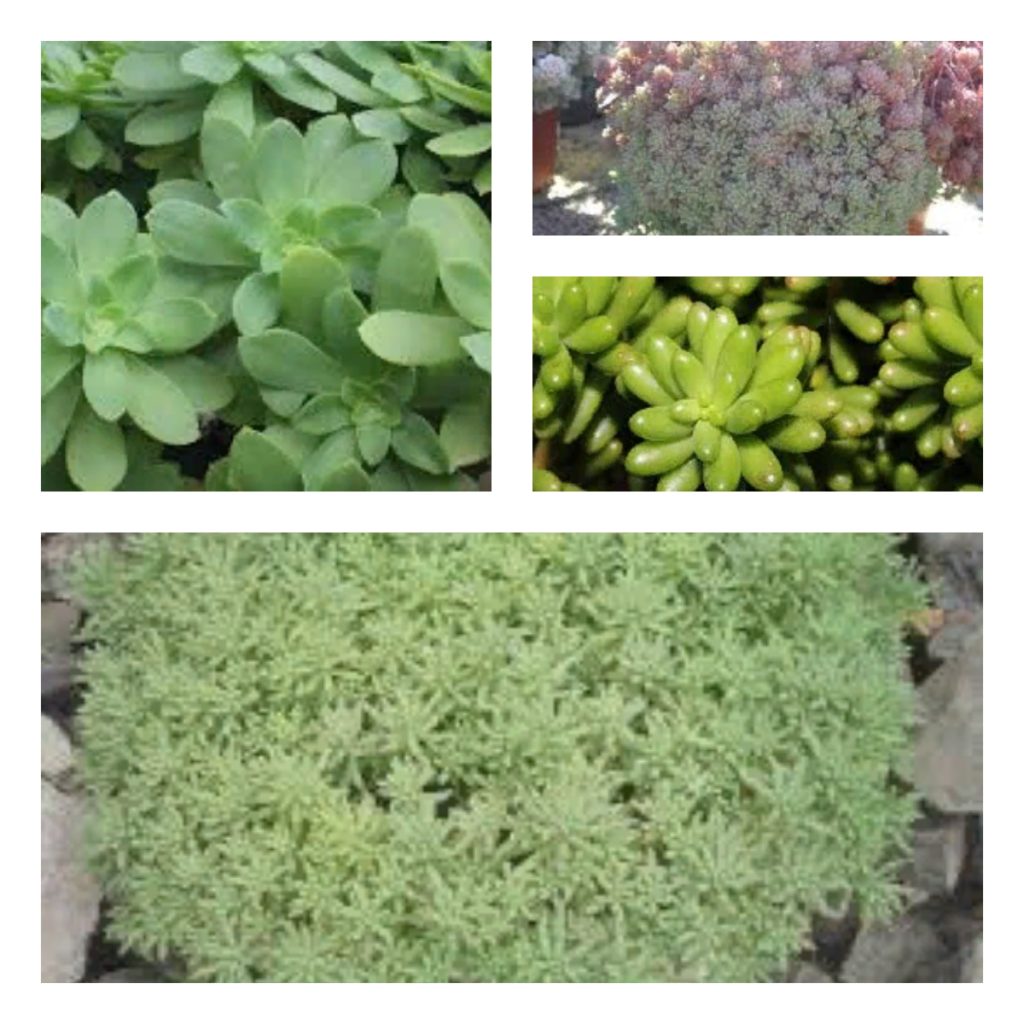
Dudley
Homeland of the succulent California. It has about 15 varieties. It reaches a height of 15 cm. It has leaves of a round or pointed shape, with a slight bloom, which can be erased when touched. Stunted, in the form of a rosette of a large flower of pale green or bluish color.
Common decorative specimens are: Brighton's Doodle, soddy, powdered, greening, Hasseya, Pachyphytum, mealy, Anthony.

Advantages:
- blooms;
- resistant to disease;
- calm to low air humidity;
- beautiful shape;
- suitable for inexperienced florists.
Disadvantages:
- likes good lighting;
- growing slowly;
- watering by the bottom method (through the pallet);
- does not like transplants;
- has a powdery coating.

Suitable microclimate:
It perfectly tolerates direct sunlight without requiring darkening.
In winter, it is necessary to reduce the temperature to +12 degrees, the rest of the time it grows well at room temperature.
Priming:
Ready-made soil mixtures are suitable for succulents or based on a universal mixture with the addition of sand, charcoal.
Watering:
Doodle needs moderate watering, only after the soil is completely dry. In winter, it is necessary to reduce moisture.
Water the succulent plant to the root. It is not necessary to spray.
Top dressing:
Fertilizers are normal succulent fertilizers, but diluted. High in potassium.
Fertilization is sufficient about 3 times in the summer.
Reproduction:
Perhaps with the help of seeds, cuttings, leaf rosettes.
Bloom:
The plant blooms in summer with white or light pink flowers, which are located on a long peduncle.
Diseases:
Dudleya is very rarely exposed to diseases or pests.
Beard
Perennial decorative succulent. Another name for the plant is young spherical.
Has a beautiful decorative look. This is a small rosette up to 8 cm in diameter. Small fleshy leaves with red edges, covered with light hairs.
Originally from European countries. There are from 3 to 6 varieties.
Heifel's Beardnik stands out for its decorative features.

Advantages:
- evergreen;
- beautiful flowers of different colors;
- high winter hardiness;
- disease resistance;
- unpretentious;
- several copies can be placed in one container;
- use in traditional medicine;
- carries dry room air.
Disadvantages:
- growing slowly;
- blooms only once in a lifetime;
- loses its beautiful appearance without sufficient lighting.
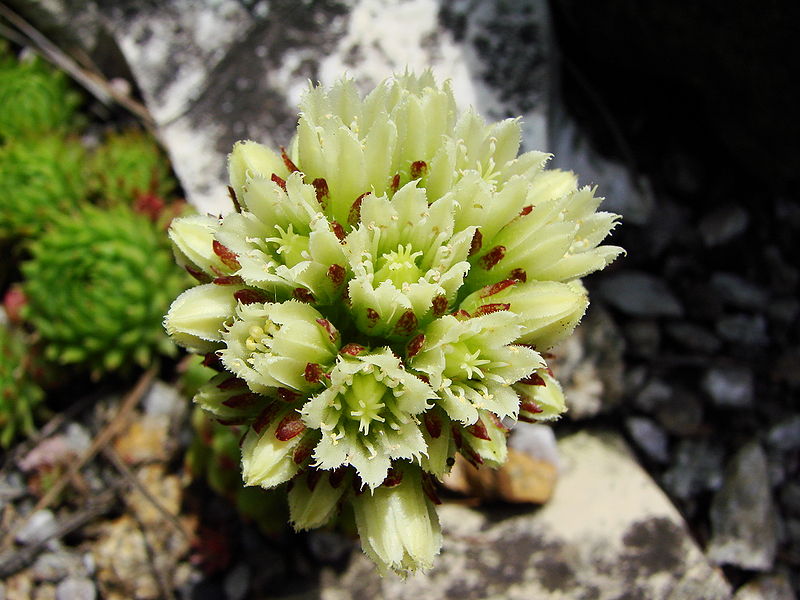
Suitable microclimate:
In winter, the optimum temperature is up to +15 degrees, in summer from +20 to + 25 degrees.Loves bright, well-lit places.
Priming:
For good growth, a mixture of turf, leafy soil, peat, sand, taken in equal proportions, is suitable.
Watering:
Moisturize like all succulents: moderate in summer, rare in winter.
Top dressing:
It is enough to feed with fertilizers 3 times during the summer months.
Reproduction:
It is possible to propagate the Bearded by seeds or rosettes.
Bloom:
Flower formation occurs from July to August, but not every year. They look like a bell of 5-6 petals, light yellow or yellow-green in color. Located on the extended arrows, up to 30 cm long.
average price:
a mixture of seeds - 26 rubles / pack., a mixture of winter-hardy varieties - 65 rubles.
Lapidaria
The full name of this unusual gift of flora is Margarita's Lapidarium. The name is translated as a stone, because similar in appearance to him.
A rosette of leaves, each of which has three faces. The color is gray-pink or gray-green.
It has a daisy-like flower with a diameter of about 5 cm. There can be several of them at once, covering the lower part. Once a year, the "stones" bloom, turning into a "stone flower".
This unique representative has no analogues.
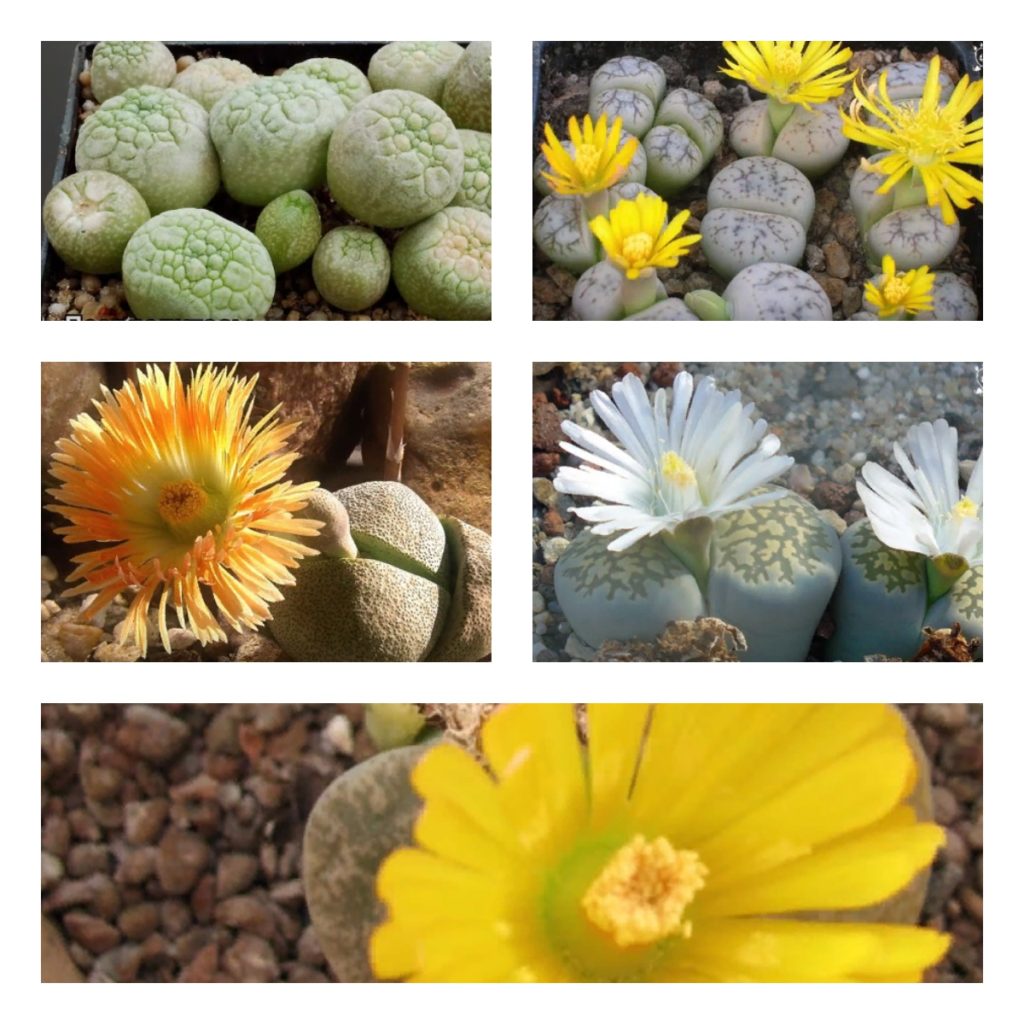
Advantages:
- exotic look;
- blooming;
- unpretentious;
- large flower;
- does not cause allergies.
Disadvantages:
- reproduction by seeds only.
Suitable microclimate:
Withstands winter temperatures up to +8, in summer up to +28 degrees. Loves sunny places without direct rays, drought.
Priming:
Will feel good in a mixture of sheet, sandy soil, taken in proportions 1: 1, with the addition of a loosening agent. It will provide oxygen access to the root system.
Watering:
Withstands the winter well when dry. In summer, it needs abundant watering, alternating with complete drying out of the soil.
Reproduction:
It is possible to propagate this plant sample with the help of seeds, which are presented in flower shops.
Bloom:
Occurs in the second year after sowing the seeds. Flowering takes place in September - October, lasts about a week.
Diseases:
- Lapidaria can be susceptible to a disease called gray rot, which develops after it is oversaturated with moisture.
- Cracked leaves will tell of an excess of moisture.
- It is quite resistant to other diseases and pests.
average price:
mix of "Living stones" of 5 pcs. - 98 rubles, sprouts in a test tube - 583 rubles.
Spurge
These plants are also succulents. There are up to 2000 different varieties, 120 of which are decorative. They are very diverse in shape, size, and appearance. But all are united by a common property - the presence of milky juice in its structure. Obese, tirukali, Mila, large-horned, triangular - these are the most common decorative varieties of milkweed.
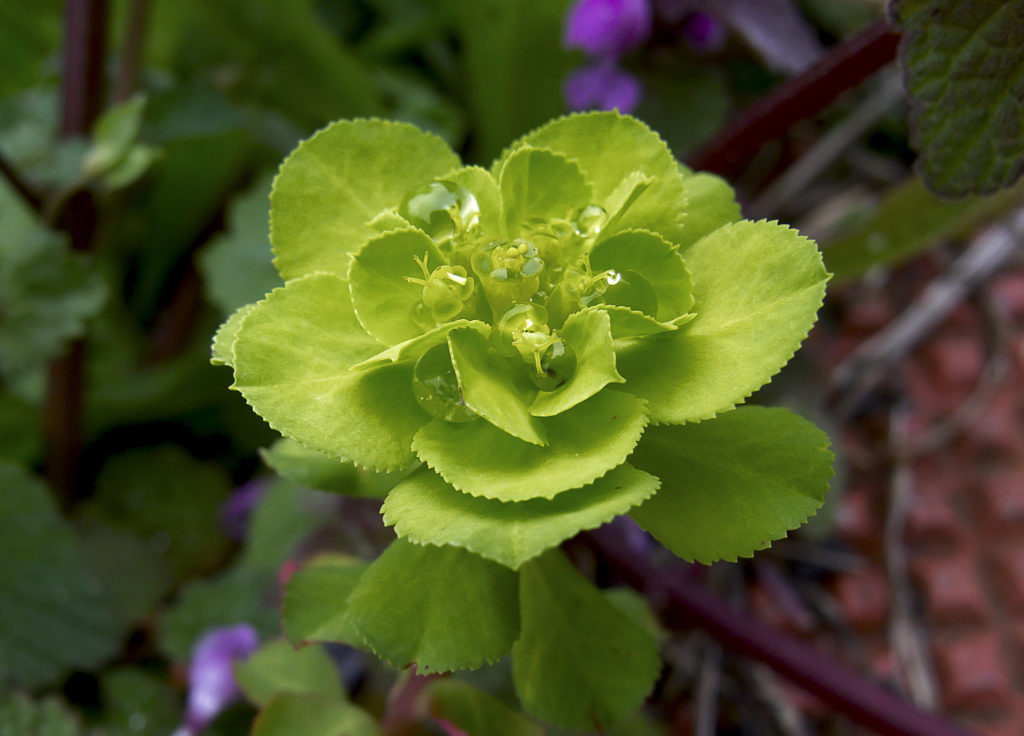
Advantages:
- protects against the harmful effects of TV and computer;
- capable of "self-propagation":
- unpretentious;
- eliminates unpleasant odors.
Disadvantages:
- milky juice is poisonous;
- look after with gloves
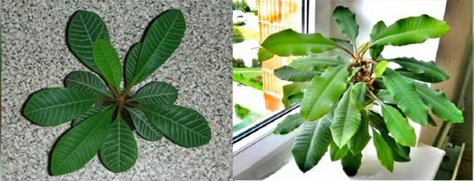
Suitable microclimate:
They feel good in slightly dark places with a temperature of +10 in winter and +30 degrees in summer.
Priming:
A suitable soil will be a mixture with humus, sand, the addition of charcoal, neutral acidity. Lay the bottom layer out of the drain.
Watering:
Watering should be done carefully, excluding moisture on the leaves. More frequent watering in summer, moderate in winter. the plant is resting.
Prevent the soil from drying out.
Top dressing:
In the spring and summer period, it is enough to feed the spurge once a month with a specially selected fertilizer.
Reproduction:
It occurs by grafting or planting seeds. Some flowers throw their seeds into the ground on their own, which subsequently germinate directly in the pot.
Diseases:
Euphorbia can tell its owner about its disease:
- Fallen leaves testify to the lack of phosphorus, the need to replenish it;
- Dry leaves indicate insufficient watering;
- too dark color of young leaves indicates that the plant does not have enough light.It is out of place;
- Rotting of the stem is possible due to overflow of soil at low room temperatures.
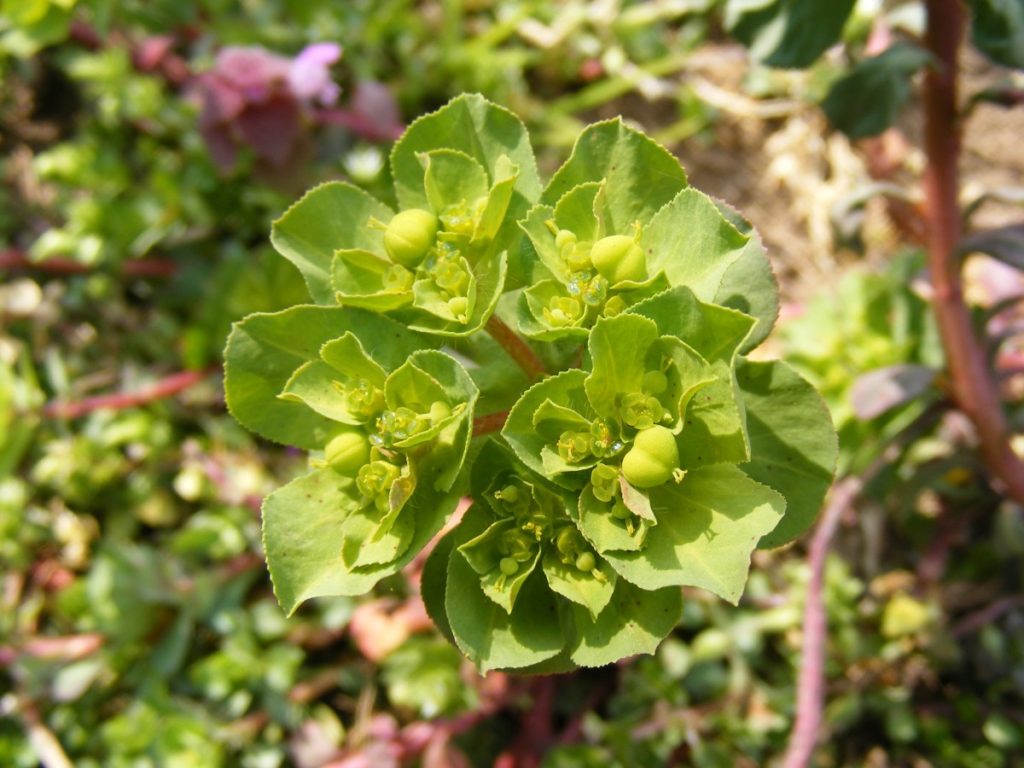
Where to locate
You can put succulents in different rooms, in the corridor, on the balcony, loggia, on the floor, window sills, walls.
Can be arranged according to the rules of Feng Shui.
Feng Shui
This is a teaching that allows you to use the energy of space correctly. Transforming it from negative to positive. Strengthening with the correct placement of objects. Each plant has its own energy and, according to Feng Shui philosophy, it is important to use it correctly.
According to this teaching:
- Cacti should be placed on windowsills or closer to the exit. Then they will be able to neutralize all the negative energy that fills the house. The plants will create a protective halo for the entire family.
- They contribute to the activation of the brain, therefore they are not installed in resting places or children's rooms, so as not to cause unnecessary overexcitation.
- Installed on window sills facing the four cardinal points, thorny succulents will bring marriage closer.
- The bastard and all types with rounded thick leaves will become universal. The larger and thicker the leaves, the more wealth and material well-being will come to the house. They will accumulate positive energy and then distribute it. Put a money on the bottom of a green or red pot, and then plant a money flower.
- Tall specimens, placed on both sides of the doorway, will protect you from intruders.
- Representatives of the flora, whose leaves grow upward, will help in enhancing personal energy.
- The larger the green specimens, the stronger their energy field.
- Blooming varieties will bring good luck in personal life or any endeavors, bring the moment of the appearance of children closer. It is better to place them near the berth.
- It is necessary to balance plants with masculine energy (for example, cacti) with those with feminine charisma (flowering).

How to place and combine
Making succulents is quite an interesting activity in which you can show your creativity.
Single plants can be planted or transplanted into pots. Containers decorated in an eco-style, with African patterns or with bright colors reminiscent of Mexican motifs, will look beautiful.
Creating a composition
If you already have several residents of hot countries, then they can be grouped as one family or create a composition from various varieties.
For convenience and to enhance the aesthetic appearance, we place pots of different sizes with samples of succulents in a pallet (preferably with legs), placing them according to the rule: large sizes in the background, the smallest in front. Accordingly, the plants will take the correct position: high varieties will not cover the undersized ones.
Let's create a composition, taking into account three basic rules:
- The far rows will be occupied by tall, vertical guests from the deserts.
- Let's give the middle row to more bushy, low representatives.
- Let the nearest rows be occupied by creeping varieties.
This will create a multilevel composition with a good view of all green participants.
When plants are in separate pots, it is convenient for beginners in flower beds: they can be moved around, observed growth, and the acquisition of the final size of growing specimens.
Subsequently, plants can be transplanted from individual pots into a common container with low sides. This type of "desert garden" will look more impressive.
For more experienced florists who are already familiar with the characteristics of succulents, more complex options for creating mini gardens are suitable; compositions made in different styles, sizes; florariums, living pictures.

Florarium
This is a fashionable trend for creating stylish living compositions that has appeared relatively recently in floristry. Flower terrariums are created in glass or plastic vases. The shapes of containers are varied: in the form of a sphere, a cube, a rhombus, a rhombocuboectahedron.
The original compositions are quite effective and bring complete aesthetic satisfaction.This is a beautiful, modern present that pleases the eye. Will satisfy the most demanding taste.
The florarium also has a practical component. It will not only decorate your home, but it will become a house for plants, not accessible for small children and pets. It can be fixed at a safe height.
This will ensure the safety of exotic ikebana.
Living paintings
With the help of succulents, you can create a beautiful living picture. This unusual way of vertical arrangement of suitable samples will delight you with its beauty and originality.
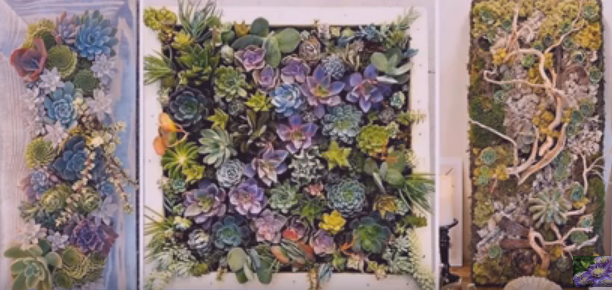
A nylon or metal grille is attached to a frame of a suitable size.
Flowers of suitable varieties are planted on it: groundwort, ripsolis, tradescantia, sedum.
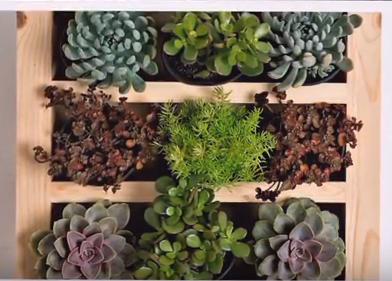
They are hanging, curly or carpet-like specimens, some of which are in bloom. Watering such a picture can be done by spraying.
Various types of succulent specimens fit well into different styles of rooms:
Scandi style
The Scandinavian look of the interior implies an eco-style, the use of items made from natural materials.
These apartments are characterized by the presence of free space with large windows. Such a room is filled with natural light, which is very suitable for plants from hot countries.
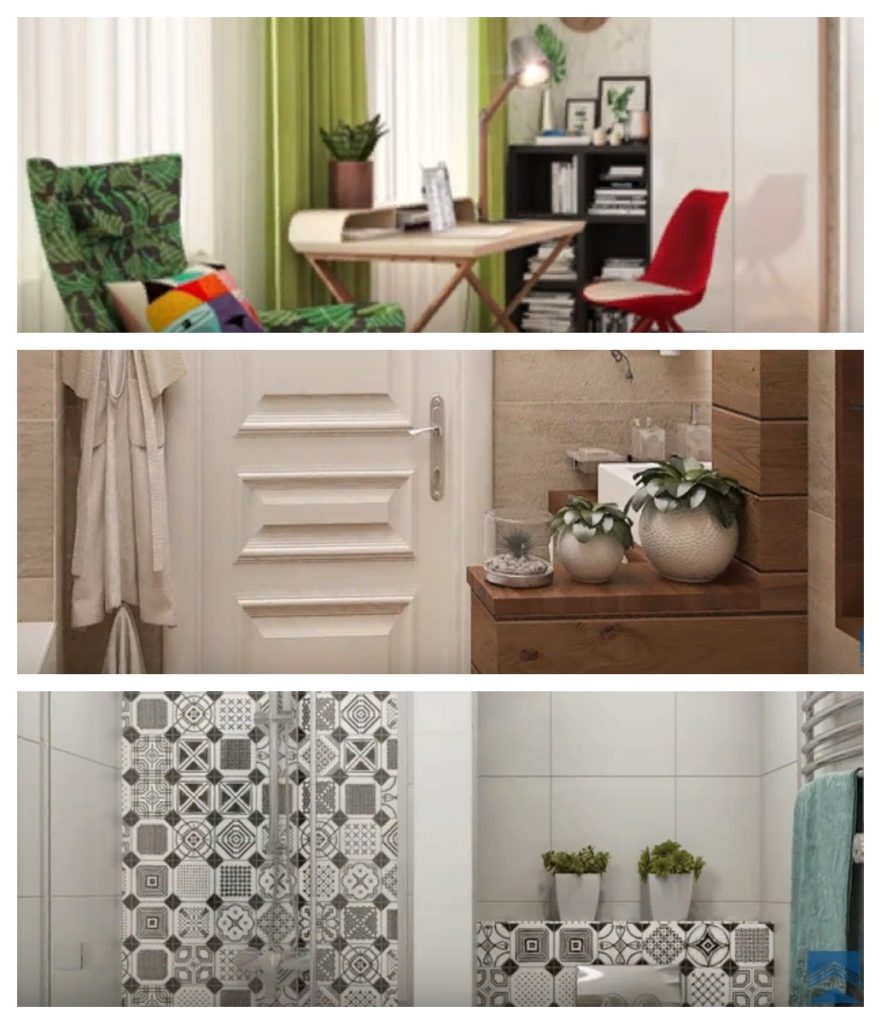
Such rooms are not cluttered with unnecessary items. Vegetable greens can be an exception.
Succulents or cacti growing in pots or pots made from ecological materials (glass, wood, clay, even metal) will fit organically, emphasizing the Scandinavian style.
Plants can be placed in small numbers or fill all empty spaces as much as possible - they will not overwhelm the Scandi style.
Boho style
The interiors, made in Boho style, are comfortable furniture in ethnic style, a large number of multi-colored pillows, carpets, figurines, paintings, antiques.
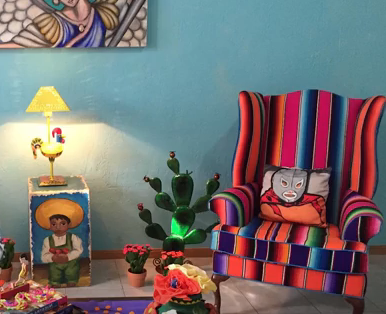
The room is saturated with bright colors. This style is close to African and disposes to the implementation of creative ideas.
Succulent plants will fit perfectly here, because Africa is the birthplace of most of these representatives.
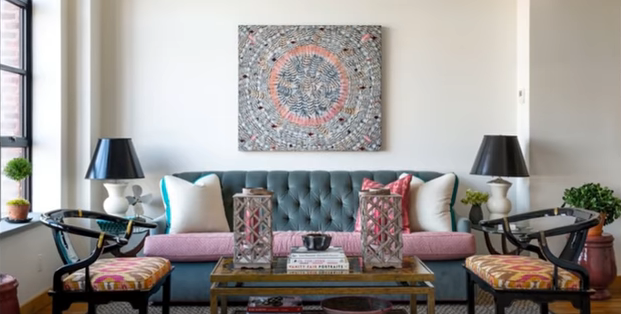
Smaller specimens can be placed on windowsills, large ones can be installed in beautiful pots on the floor. Reinforce decorative patterns hanging from the ceiling.
All these green "islands" add spice to the room. They will make you feel the trail of the desert.
Florists also create bouquets in Boho style. They include a variety of brightly colored flowers. Cherry, dark green, orange, blue, red colors will go well in such a bouquet. The bouquet turns out to be bright, asymmetrical, slightly careless
Country Style
This is the "grandmother's" style with the interior of a country house.
This setting involves paper wallpapers with small flowers, a variety of knitted tablecloths and napkins, woven rugs, wicker furniture, lampshades over the table.
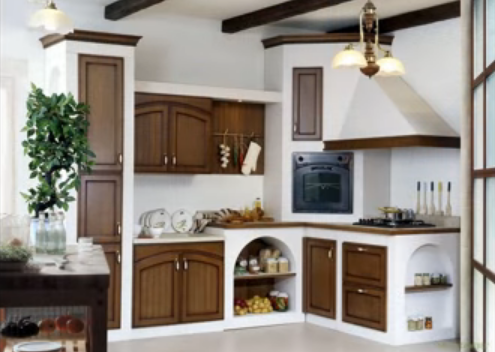
And, of course, flowers. They can be in clay pots, woven from vines or other sustainable materials.
Unpretentious in form and easy to care for, succulents will fit this interior like no one. They can be located on tables, window sills, cabinets. dressers. Having created the coziness of a homely atmosphere, they will dispose to a pleasant rest.
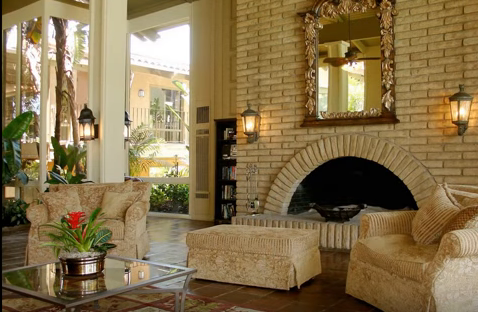
Children's room
The rooms for children do not have views:
- Having thorns (cacti, aloe). They can hurt a child.
- With powdery pollination. The child will be curious to erase it, and the succulent will be deprived of protection.
- Varieties of milkweed. Their poisonous juice can cause serious poisoning, burns on the skin.
- Large adult plants. They can cause injury if accidentally hit during active games.
- Allergic.
For a children's room, you need to select safe varieties with smooth leaves or a velvet coating.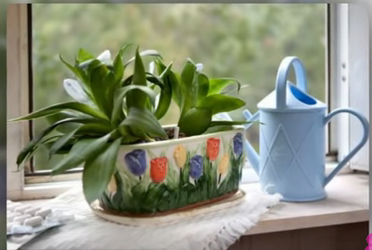
Do not overload the children's room, turning it into a botanical garden, because it is still a playroom. One or two flowers will be enough.
With their help, you can develop a respectful attitude towards plants in a child, devote to the rules of caring for them.
Location on the balcony
For the summer period, succulents are recommended to be placed on the balcony.
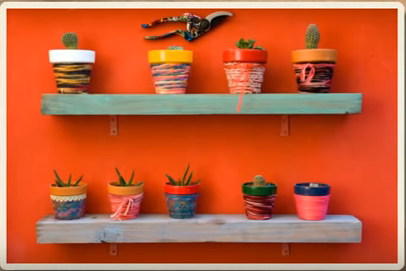
The best location would be on walls, in flower stands, on the floor, or as a beautiful composition on a flat surface.
Suitable options are euphorbia, lapidaria, beard, dodlea, various cacti, crassula, etc.
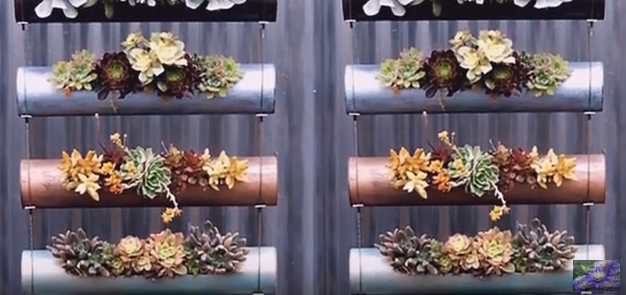
Choosing the best succulent
Suitable varieties for beginners:
- chiberia;
- aloe;
- sedum;
- variegated shoviana;
- pohyphytum;
- gastria;
- haworthia;
- fat woman;
- Kalanchoe;
- adramiscus;
- catelidon.
Exotic species:
These include the green inhabitants of Africa, similar to stones:
- lithops;
- fritia;
- dinteranthus;
- fenestraria;
- titanopsis;
- conophytum.
Popular:
The recognized representatives of the flora include varieties of cacti and jerky:
- aeoniums;
- graptopetalum;
- pachyphytums;
- aichrisons;
- monantes;
- brigamia;
- portulacaria;
- argyroderma;
- Kalanchoe;
- Haworthia, etc.
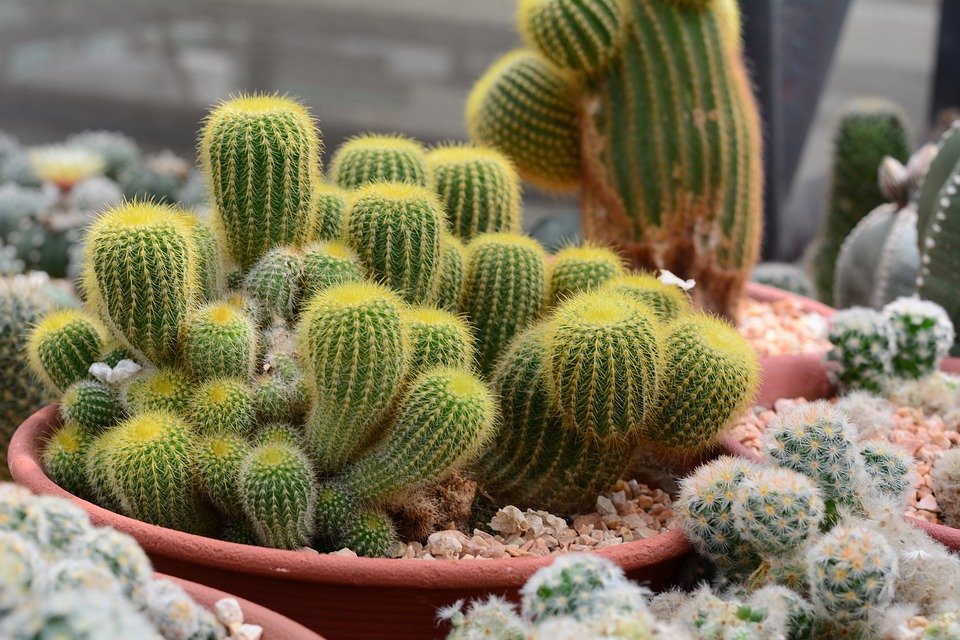
In this article, we tried to collect all the necessary information about succulents and introduce you to these worthy representatives of the Floristic Kingdom.
We hope that you are interested in the rich world of succulents, and you already know which one you will buy next weekend. Who will become the new resident of your home.
For some, this will be the first step to collecting, creating natural green islands, stylish bouquets or paintings. And someone will be encouraged to a greater feat - changing the interior of their home.
In any case, we wish you success and joyful moments in your life associated with your new hobby - succulent guests from the deserts.

